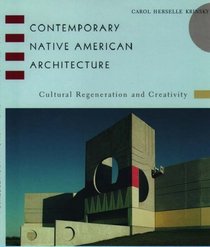Search -
Contemporary Native American Architecture: Cultural Regeneration and Creativity
Contemporary Native American Architecture Cultural Regeneration and Creativity
Author:
Why, during the past thirty years, has there been a dramatic change in architecture by and for American Indians? How does it reflect the revival of language and the renewal and invention of dance, music, and other performance, and the remarkable burst of creativity in Native American novels and poetry? And since architecture requires technical e... more »
Author:
Why, during the past thirty years, has there been a dramatic change in architecture by and for American Indians? How does it reflect the revival of language and the renewal and invention of dance, music, and other performance, and the remarkable burst of creativity in Native American novels and poetry? And since architecture requires technical e... more »
ISBN-13: 9780195097405
ISBN-10: 0195097408
Publication Date: 12/19/1996
Pages: 287
Rating: ?
ISBN-10: 0195097408
Publication Date: 12/19/1996
Pages: 287
Rating: ?
0 stars, based on 0 rating
Publisher: Oxford University Press
Book Type: Paperback
Other Versions: Hardcover
Members Wishing: 0
Reviews: Amazon | Write a Review
Book Type: Paperback
Other Versions: Hardcover
Members Wishing: 0
Reviews: Amazon | Write a Review
Genres:
- History >> Americas >> Native American >> General & Post-Columbus
- Crafts, Hobbies & Home >> How-to & Home Improvements >> Home Decorating & Design >> General
- Engineering & Transportation >> Architecture >> General
- Engineering & Transportation >> Architecture >> Buildings >> Specific Styles




